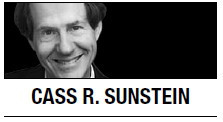 Until recently, the sophisticated view about calorie labels in restaurants was one of despair: A series of studies suggested that the practice, required by Obamacare and modeled on what has been done in New York and other cities, just doesn’t succeed in promoting healthy food choices and reducing obesity.
Until recently, the sophisticated view about calorie labels in restaurants was one of despair: A series of studies suggested that the practice, required by Obamacare and modeled on what has been done in New York and other cities, just doesn’t succeed in promoting healthy food choices and reducing obesity.
But comprehensive new research offers a dramatically different picture. It finds that if we divide Americans into subgroups — the normal, the overweight, and the obese — we’ll find that calorie labels have had a large and beneficial effect on those who most need them.
Partha Deb and Carmen Vargas, both of Hunter College, focused on what happened to people’s body mass from 2003 to 2012. They used data from the Behavioral Risk Factor Surveillance System, the annual, nationally representative survey conducted by the Centers for Disease Control and Prevention in collaboration with state health departments. The survey collects information on self-reported height and weight, as well as demographic information.
Deb and Vargas used an ingenious empirical strategy, exploiting county-level variations in the dates of implementation of calorie labeling laws to specify their effects. The broadest finding of the research, based on sophisticated statistical techniques, is in line with the current conventional wisdom: Calorie labels had no statistically significant effects on women, and for men, the effects were pretty modest (though they did count as statistically significant).
But things get much more interesting once we start to look at subpopulations, in terms of Body Mass Index: normal, overweight or obese. In all three subpopulations, men’s BMI was significantly reduced after the introduction of calorie labels. The reduction was largest among the obese, next largest among the overweight, and smallest for those with a normal BMI. For women, the effect was statistically significant only for those who were overweight.
Digging deeper, Deb and Vargas find that both men and women in the normal weight class tend to live in high-income areas and to be college graduates; that group shows little or no effect from the calorie labels. Among the men and women who show the largest effects, an unusually high percentage tend to have no education beyond high school, to be older, and to be Hispanic.
In general, these results make a lot of sense. People of normal weight have no reason to change their behavior; they don’t have a weight problem. And if people are highly educated, it’s possible that calorie labels will not tell them a whole lot.
By contrast, men and women with weight problems have good reasons to try to lose weight — and the labels have helped them to do just that. And if consumers are less well-educated, maybe the calorie labels are more likely to tell them something they don’t know.
All in all, it’s a terrific story: The people who need to lose weight are losing weight, and the people who are least likely to know about caloric content are learning about it.
In this light, the research leaves only one serious puzzle: obese women, for whom the labels have had no effect. Deb and Vargas do not try to explain this finding. It remains a mystery.
Notwithstanding that puzzle, we can draw two large lessons from the new research. The first involves the immense hazards of drawing broad conclusions from population-wide findings. A new policy might have modest effects on Americans as a whole, but big ones on large subpopulations. That might be exactly the point! It’s an important question to investigate.
The second lesson involves the wide range of policies and regulations that try to protect consumers by requiring companies to disclose information. In recent years, it has become fashionable to ridicule those policies, in areas that include energy efficiency, fuel economy, credit cards, product safety, and mortgages. Skeptics contend that people won’t pay attention and that if policymakers really want to address a problem, they need to go much further (for example, with new taxes, mandates and prohibitions).
Maybe so. Certainly, the U.S. needs to do far more to confront the obesity problem, which is producing serious health risks. But we shouldn’t disparage policies that are working, or be too quick to conclude, on the basis of speculation or preliminary findings, that they’re not. For consumers, calorie labels have the signal advantage of preserving freedom of choice — and we now have evidence that in a few short years, they are having significant beneficial impacts on the lives of the very people they are intended to help.
By Cass R. Sunstein
(Bloomberg)
Cass R. Sunstein, the former administrator of the White House Office of Information and Regulatory Affairs, is the Robert Walmsley university professor at Harvard Law School and a Bloomberg View columnist. — Ed.

